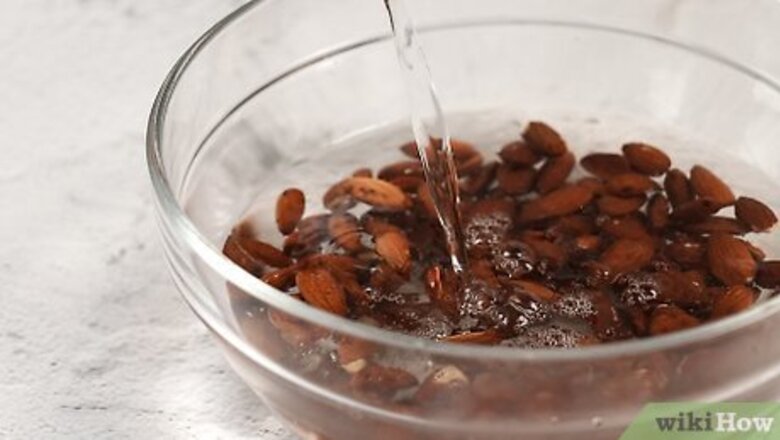
views
Soaking Nuts
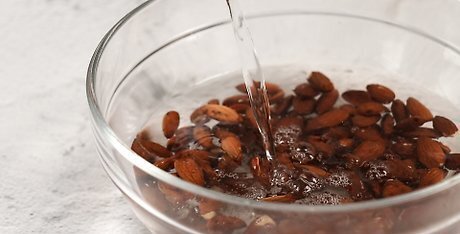
Cover the nuts with lukewarm water. Place your nuts into a large bowl. Add enough lukewarm water to completely cover the nuts, plus an extra 2 inches (5 cm) of water. Sprinkle in the salt and stir the nuts to distribute the salt. You can soak as many nuts at a time as you like. Use a tablespoon (19 g) of salt per 4 cups of nuts that you soak. You can also soak seeds, beans, grains, and legumes using this same method.
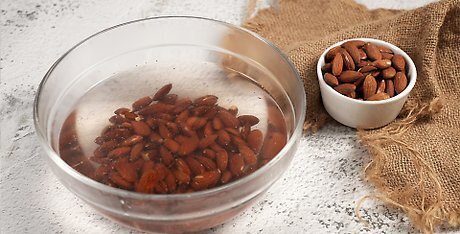
Soak the nuts. Different nuts benefit from various soaking times, and if you're not sure, soak the nuts for 12 to 24 hours. Place the nuts in a cool, dark place for the soaking period. The soaking times for different nuts are: 12 hours for almonds and Brazil nuts 8 hours for hazelnuts, pecans, walnuts, and pine nuts 6 hours for cashews 4 hours for macadamia nuts
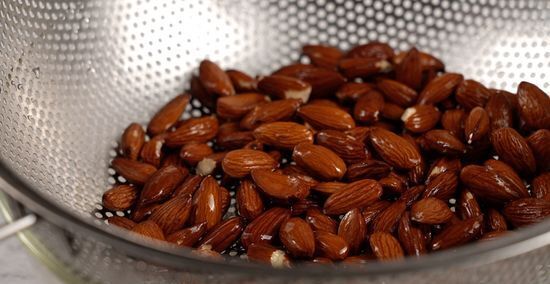
Drain and rinse. When the nuts have soaked for their recommended times, drain the water by pouring the nuts into a strainer. Run fresh, cold water over the nuts to rinse them. When the nuts have been rinsed, lay them on a clean towel to remove excess water.
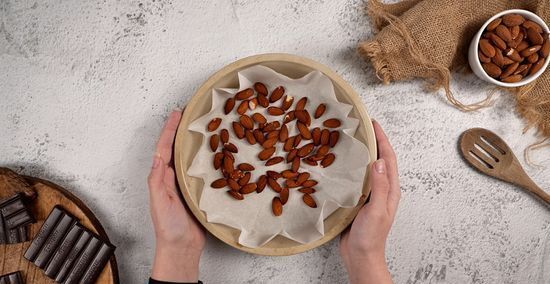
Dehydrate the nuts. Once your nuts are soaked, you can eat them as is without drying them first. But dehydrating the nuts removes the water and makes them crunchier, and many people prefer the texture of crunchy nuts. If you don’t have a dehydrator, place the nuts on a baking sheet and roast them in the oven on the lowest temperature. Spread the nuts out on the dehydrator trays in a single layer, and arrange the trays in the dehydrator. Turn on the dehydrator to 150 F (66 C). Dehydrate the nuts for 12 hours and check them for doneness. For crunchier nuts, dehydrate them for an additional three to 12 hours.

Enjoy the nuts and store leftovers. Transfer leftover dehydrated nuts to an airtight container and store in the refrigerator for two weeks. For a longer shelf-life, store the nuts in the freezer for up to two months. If you opted to not dehydrate your nuts, store them in the refrigerator and eat them within 24 hours of draining.
Using Soaked Nuts

Make nut butters. Nut butters are tasty and nutritious spreads that are great on toast, fruit, ice cream, pancakes, and other foods. Nut butters can also be used for sauces, soups, and other savory dishes. Some of the most popular nut butters are peanut, almond, and cashew butter. You can also make blended nut butters that combine different types of nuts.

Experiment with homemade nut milks. Nut milks like almond milk and cashew milk are great non-dairy alternatives to cow’s milk, and you can make your own at home with soaked nuts. Once you’ve made your milk, you can: Drink it plain Use it in cereal Add it to coffees, teas, and smoothies Use it to make cream soups Use it in baked goods
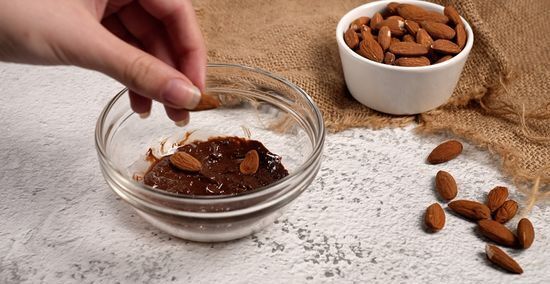
Try some chocolate-coated almonds. These delicious treats combine soaked and dehydrated almonds with chocolate, making them a tasty dessert for any occasion, a lovely gift, or a yummy topping for ice cream, cakes, and other desserts.
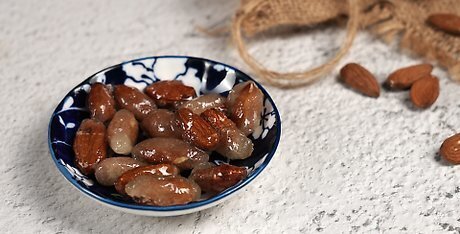
Make your own pralines. Pralines are a tasty and decadent treat that combine nuts and sugar to make a crunchy, sugar-coated nut. You can eat pralines plain, put them on ice cream, bake them into cakes, or they even make a great addition to salads and soups.
Sprouting Grains, Seeds, and Beans

Soak your lentils. Sprouting is the process of soaking grains, seeds, beans, and legumes, and then leaving them in a small amount of water until they sprout. The first step in sprouting is soaking, because this helps to kick start the germination process. Place your lentils or other grains, seeds, or beans into a mason jar. Fill the jar with lukewarm water. Cover the mouth of the jar with cheesecloth and secure it in place with an elastic. Let the lentils soak in the water for about 12 hours.
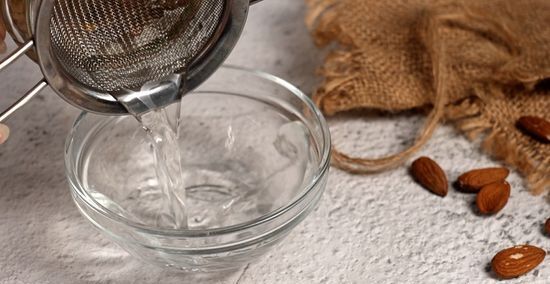
Drain and rinse the lentils. After 12 hours of soaking, remove the cheesecloth from the jar. Place an inverted strainer into the opening of the jar and drain out the water, leaving the lentils in the jar. Fill the jar with clean water and screw on the lid. Give the lentils a shake to rinse them, and then drain out the water by placing the strainer over the mouth of the jar again.
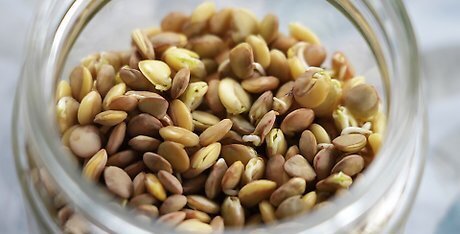
Place the lentils somewhere sunny to germinate. Secure the cheesecloth back onto the mouth of the mason jar. Turn the jar on its side and give the lentils a shake to spread them out. Place the jar in a warm, sunny location and let them germinate for two to four days. Sprouts are generally ready to eat as soon as the sprout tail is about the same length as the original grain, bean, seed, or legume.
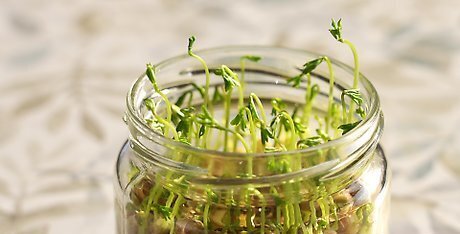
Rinse the lentils regularly as they sprout. After eight to 12 hours of germinating, rinse and drain the lentils using the same process as before. Then, cover the jar with the cheesecloth again, turn the jar on its side, and return the lentils to their sunny location. Repeat the rinsing and draining process two to three times daily until the sprouts are ready.
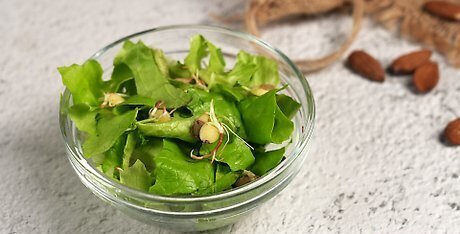
Enjoy your sprouts and store leftovers. You can eat your sprouts plain, add them to salads, put them on sandwiches, or enjoy them any other way you like. Leftover sprouts should be stored in an airtight container or sealable plastic bag and kept in the refrigerator. Fresh sprouts will last for about five to seven days in the fridge.



















Comments
0 comment